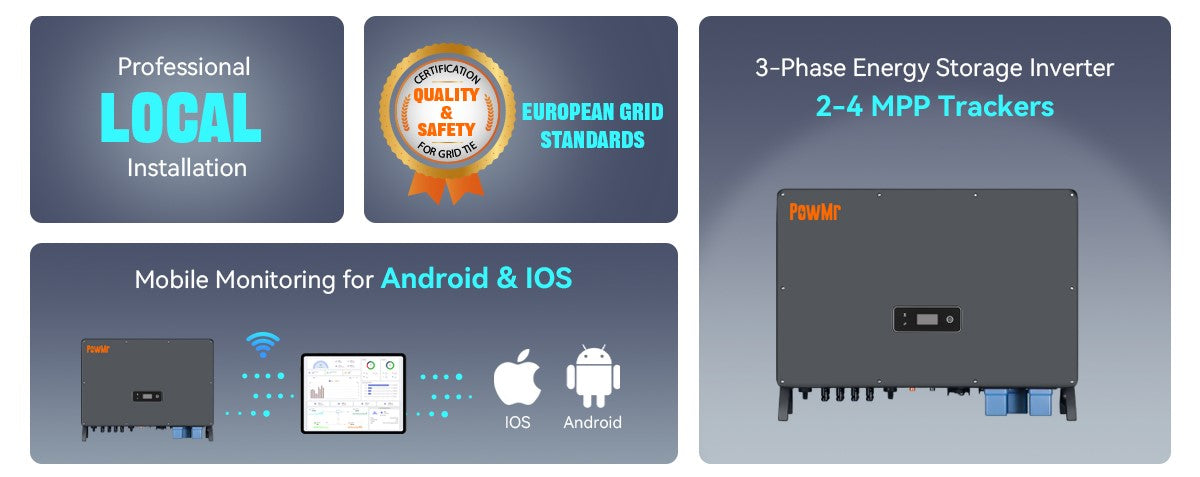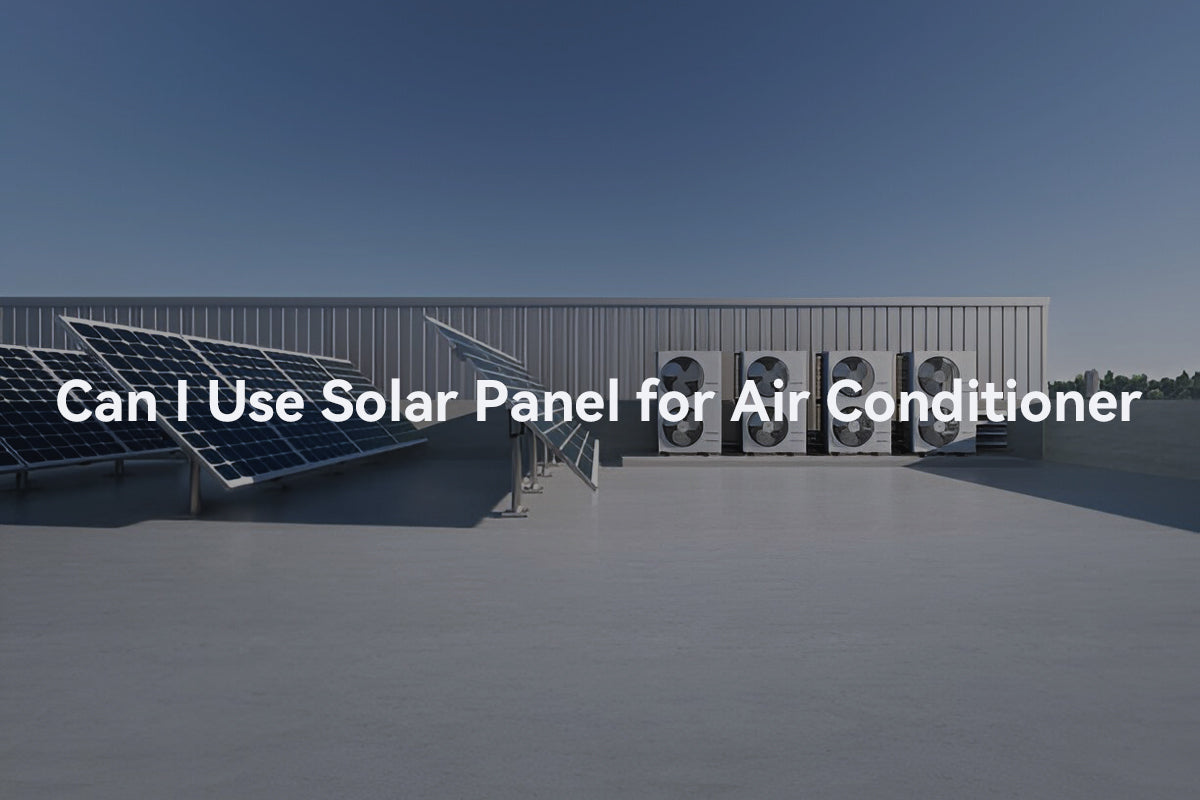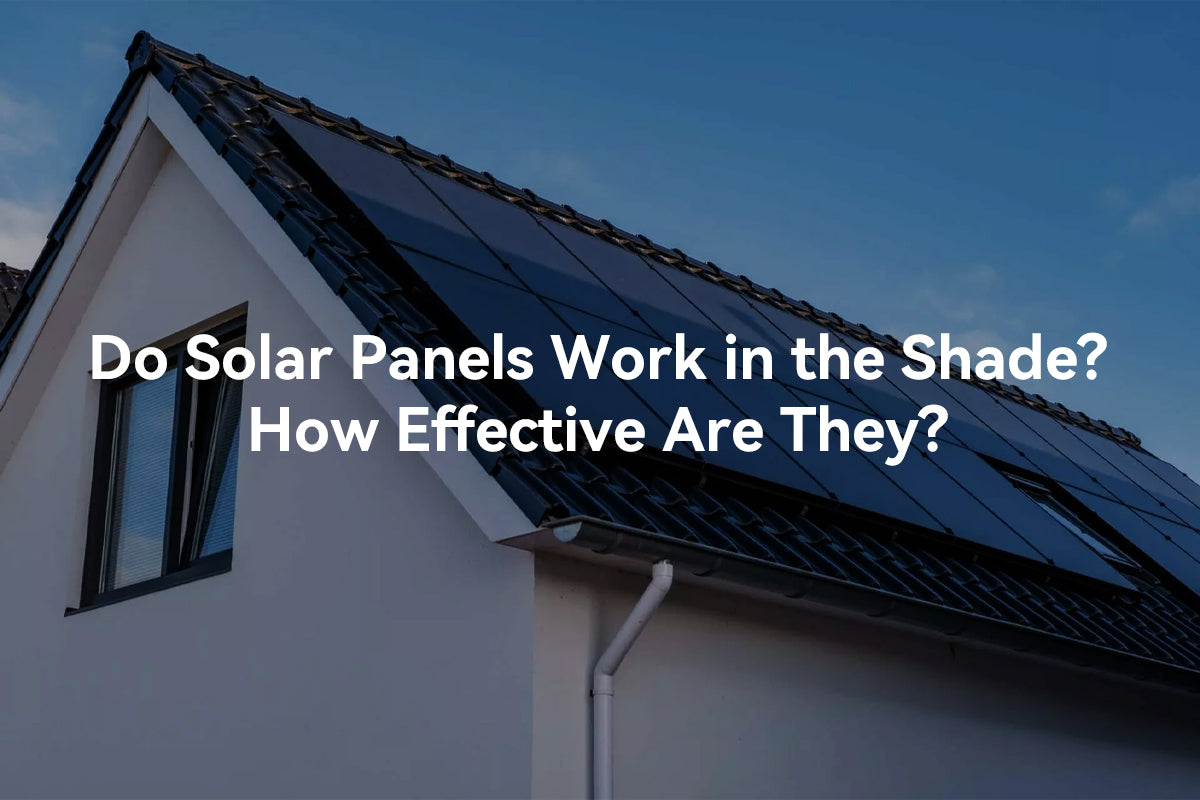ปัจจัยภายนอกต่างๆ เช่น การใช้เครื่องใช้ไฟฟ้าที่เพิ่มขึ้นและการรวมรถยนต์ไฟฟ้า อาจทำให้การผลิตพลังงานแสงอาทิตย์ของระบบที่มีอยู่หลายระบบ ตามหลังความต้องการไฟฟ้าที่เพิ่มขึ้น ดังนั้น การขยายระบบพลังงานแสงอาทิตย์จึงมีแนวโน้มเพิ่มมากขึ้นเรื่อยๆ.
การติดตั้งแผงโซลาร์เซลล์บนระบบที่มีอยู่ต้องการการวางแผนและการดำเนินการอย่างรอบคอบ เพื่อให้คุณมีแนวคิดเพิ่มเติม บทความนี้สำรวจข้อพิจารณาที่สำคัญและ วิธีการทั่วไป สำหรับการขยายระบบแผงโซลาร์เซลล์ ไม่ว่าจะที่บ้านหรือระหว่างการเดินทาง อย่างไรก็ตาม หากคุณขาดประสบการณ์ในระดับมืออาชีพ แนะนำให้ปรึกษาผู้ติดตั้งเดิมของคุณหรือหาผู้เชี่ยวชาญเพื่อให้แน่ใจในความปลอดภัย.
ฉันสามารถเพิ่มแผงโซลาร์เซลล์ลงในระบบที่มีอยู่ได้ไหม?
ใช่, สามารถติดตั้งแผงโซลาร์เซลล์เพิ่มเติมด้วยตัวเองได้หากคุณมีระบบออฟกริด อย่างไรก็ตาม สำหรับผู้ที่ไม่มีความรู้ด้านไฟฟ้า แนะนำให้จ้างมืออาชีพ โดยเฉพาะเมื่อเกี่ยวข้องกับการขยายระบบกริด-ไท.
ข้อพิจารณาก่อนการติดตั้งแผงโซลาร์เซลล์ในระบบที่มีอยู่แล้ว
อายุของระบบแผงโซลาร์เซลล์ที่มีอยู่
อายุของระบบปัจจุบันของคุณสามารถส่งผลกระทบอย่างมากต่อความเป็นไปได้และประสิทธิภาพในการเพิ่มแผงใหม่ ระบบเก่าอาจมีเทคโนโลยีที่ล้าสมัยซึ่งไม่เข้ากันกับแผงใหม่ๆ
การเชื่อมต่อแผงเก่าและใหม่ โดยเฉพาะเมื่อแผงเก่ามีแรงดันไฟฟ้าและกระแสไฟฟ้าต่ำกว่า อาจทำให้เกิดการสูญเสียพลังงานและลดประสิทธิภาพ เนื่องจากระบบแผงโซลาร์เซลล์ทั้งหมด มักจะทำงานที่ ระดับ แรงดันไฟฟ้าหรือกระแสไฟฟ้าต่ำที่สุด.
พื้นที่หลังคาที่สามารถใช้ได้
การพิจารณาแรกคือคุณมีพื้นที่หลังคาเพียงพอที่จะติดตั้งแผงเพิ่มเติมหรือไม่ สิ่งสำคัญคือต้องประเมินพื้นที่ที่มีอยู่เพื่อ รับรอง ว่าแผงใหม่สามารถติดตั้งได้ โดยไม่ทำให้ ประสิทธิภาพของระบบที่มีอยู่ลดลง ปัจจัยต่าง ๆ เช่น การถูกบัง แสงแดด และมุมหลังคายังมีบทบาทสำคัญในการกำหนดความเหมาะสมของหลังคาของคุณสำหรับแผงเพิ่มเติม.
ตำแหน่งที่ดีที่สุดสำหรับการติดตั้งโซลาร์เซลล์บนหลังคาคือในพื้นที่ทางทิศใต้ที่ไม่มีสิ่งกีดขวาง อย่างไรก็ตาม มีแนวโน้มว่าการติดตั้งระบบโซลาร์เดิมได้ใช้พื้นที่เหล่านี้ไปแล้ว ดังนั้นคุณอาจต้องหาวิธีการติดตั้งแผงโซลาร์เซลล์ในทิศทางที่หลากหลายโดยการติดตั้งแผงโซลาร์เซลล์ในพื้นที่เปิดในทิศตะวันตกหรือตะวันออก โซลูชันการจัดแนว PV ที่หลากหลาย.
ทางเลือกอื่น ๆ ได้แก่:
-
เปลี่ยนแผงโซลาร์เซลล์เก่า
การเปลี่ยนแผงโซลาร์เซลล์เก่าเป็นแผงใหม่ แผงโซลาร์เซลล์ในปัจจุบันผลิตไฟฟ้าได้มากขึ้นจากพื้นที่หลังคาเดียวกันเมื่อเปรียบเทียบกับอุปกรณ์ และยังผลิตได้มากกว่าหมายเลขแผงที่มีอายุสิบปี บางครั้งการเปลี่ยนอุปกรณ์เก่าสามารถให้ผลตอบแทนที่ดีที่สุดได้ -
ติดตั้งในสถานที่อื่น
เพื่อให้ระบบแผงโซลาร์เซลล์ใหม่และเก่าใช้งานได้อย่างมีประสิทธิภาพสูงสุด ให้ติดตั้งระบบใหม่ในทิศทางที่ไม่ขึ้นอยู่กับระบบเดิม อาจหันไปทางตะวันตกหรือตะวันออก
ทางเลือกอื่นคือการติดตั้งบนที่จอดรถแบบพื้นดิน, เพอร์โกล่า, หรือโครงสร้างที่ยืนอยู่เองอื่น ๆ หากแผงโซลาร์เซลล์ใหม่ไม่จำเป็นต้องเชื่อมต่อกับแบตเตอรี่, ระบบโซลาร์ระเบียง ที่มี ไมโครอินเวอร์เตอร์ จะติดตั้งได้ง่ายกว่าและช่วยให้สามารถปรับทิศทางและมุมได้อย่างเหมาะสม.
บทความที่เกี่ยวข้อง:
ในจุดนี้ คุณอาจคิดว่าค่าทดแทนแผงโซลาร์เซลล์เก่านั้นสูงเกินไป และการขยายระบบโดยการจัดตั้งระบบพลังงานแสงอาทิตย์ใหม่ที่เป็นอิสระพร้อมกับระบบแบตเตอรี่ใหม่ดูเหมือนจะเป็นทางเลือกที่ดีกว่า หากคุณต้องการเก็บพลังงานส่วนเกิน ซึ่งนำไปสู่ต้นทุนที่สูงและ การจัดการและการตรวจสอบที่ซับซ้อนมากขึ้นของระบบแบตเตอรี่สองระบบ.
อย่างไรก็ตาม อย่าตัดสินใจเร็วเกินไป ยังมี วิธีการรวมระบบแผงโซลาร์เซลล์เก่าและใหม่ ด้วย ด้านล่างนี้เราจะแนะนำวิธีการเพิ่มแผงโซลาร์เซลล์ให้กับระบบโซลาร์ที่มีอยู่สำหรับทั้งบ้านและรถบ้าน
วิธีการติดตั้งแผงโซลาร์เซลล์ในระบบบ้านที่มีอยู่แล้ว
ด้วยเทคโนโลยีแผงพลังงานแสงอาทิตย์ที่พัฒนาอย่างรวดเร็ว การหาคู่แผงที่ตรงกับแผงที่มีอยู่ของคุณอาจกลายเป็นเรื่องท้าทาย ผู้ผลิตอินเวอร์เตอร์พลังงานแสงอาทิตย์บางรายแก้ปัญหานี้โดยการเสนอการสนับสนุนสำหรับ หลายช่องป้อนพลังงานแสงอาทิตย์อิสระ หรือ อินเวอร์เตอร์ที่ทำงานขนานกัน ซึ่งช่วยให้การขยายระบบเป็นไปได้ง่ายขึ้น.
อินเวอร์เตอร์ประเภทนี้ที่มีตัวควบคุมการชาร์จพลังงานแสงอาทิตย์ MPPT ในตัวจะ ติดตาม จุดพลังงานสูงสุดของระบบแผงโซลาร์เซลล์ ที่แตกต่างกัน ในที่สุดพวกเขาจะ สื่อสารและแชร์ข้อมูลกับกันและกัน และปรับกระแสไฟฟ้า DC เพื่อชาร์จ กลุ่ม แบตเตอรี่เดียวกัน.
บทความที่เกี่ยวข้อง:
การใช้เครื่องแปลงไฟฟ้าขนานเพื่อสร้างระบบพลังงานแสงอาทิตย์ที่ขยายได้
อินเวอร์เตอร์ไฮบริด Multi MPPT - โซลูชันการจัดเรียง PV ที่หลากหลาย
ยืนยันว่าตัวแปลงสัญญาณปัจจุบันมีพอร์ตการรับพลังงานแสงอาทิตย์สองพอร์ตขึ้นไปหรือรองรับการเชื่อมต่อแบบขนานหรือไม่ หากใช่ ให้ทำตามคำแนะนำที่เกี่ยวข้องในคู่มือเพื่อเชื่อมต่อแผงโซลาร์เซลล์ใหม่ มิฉะนั้น เราขอแนะนำให้ เปลี่ยนตัวแปลงสัญญาณเดิม เพื่อให้คุณสามารถติดตั้งแผงใหม่ โดยไม่กระทบต่อชุดเก่า.
นี่คือการเตรียมการและขั้นตอนสำหรับการติดตั้งแผงโซลาร์เซลล์เพิ่มเติมในระบบโซลาร์เซลล์ที่มีอยู่ของบ้านคุณ:
ขั้นตอนที่ 1: การประเมินและการวางแผน
เริ่มต้นด้วยการ ประเมินระบบและพื้นที่หลังคาในปัจจุบันของคุณ อย่างละเอียด กำหนดว่าจะติดตั้งแผงโซลาร์เซลล์ใหม่ที่ไหน จากนั้น คำนวณจำนวนแผงโซลาร์เซลล์ที่คุณต้องการ.
ขั้นตอนที่ 2: เลือกอินเวอร์เตอร์โซลาร์เซลล์ที่เข้ากันได้
เลือกอินเวอร์เตอร์ที่ เข้ากันได้กับทั้ง ระบบแผงโซลาร์เซลล์ใหม่และที่มีอยู่ของคุณ ซึ่งรวมถึงการจับคู่พารามิเตอร์ทางไฟฟ้า เช่น กำลังไฟฟ้าสูงสุดที่ป้อนจาก PV, ช่วงแรงดันไฟฟ้าการทำงาน MPPT, กระแสการชาร์จ และฟีเจอร์อื่นๆ สำหรับคำแนะนำ อ่าน วิธีเลือกอินเวอร์เตอร์สำหรับระบบโซลาร์.
นอกจากนี้ การเลือก อินเวอร์เตอร์ MPPT หลายตัว หรือ อินเวอร์เตอร์หลายตัวสำหรับการเชื่อมต่อขนาน ขึ้นอยู่กับความต้องการและวิถีชีวิตเฉพาะของคุณ:
- หากคุณมีความต้องการโหลดที่สูงกว่าก่อนหน้านี้ อินเวอร์เตอร์แบบขนานจะเป็นที่ต้องการ มันสามารถเพิ่มแผงโซลาร์เซลล์เข้ากับระบบที่มีอยู่ จัดการแผงโซลาร์เซลล์ที่แตกต่างกันอย่างอิสระ และเพิ่มกำลังไฟฟ้า AC ของระบบโซลาร์เซลล์ทั้งหมด.
- ถ้าคุณได้ เพิ่มแบตเตอรี่ในระบบที่มีอยู่ และต้องการเพิ่มความเร็วในการชาร์จแบตเตอรี่ การเชื่อมต่ออินเวอร์เตอร์แบบขนานจะเหมาะสมกว่า.
- หากความต้องการโหลดของคุณยังไม่เปลี่ยนแปลง และคุณเพียงแค่ต้องการเพิ่มการผลิตพลังงานแสงอาทิตย์เพื่อ ส่งเข้าสู่กริด อินเวอร์เตอร์ไฮบริดแบบ MPPT คู่ที่มีพลังงานที่ระบุสูงกว่าของอินเวอร์เตอร์เดิมเล็กน้อยเป็นตัวเลือกที่เหมาะสม ซึ่งจะให้พื้นที่สำรองในกรณีที่ต้องการพลังงานมากขึ้นในอนาคต.
เราขอแนะนำ POW-Sunsmart LV12K ซึ่งเป็นอินเวอร์เตอร์ไฮบริดขนาด 10kW เพราะมันเหมาะสมสำหรับทุกสถานการณ์ที่กล่าวถึงข้างต้น.

โมเดลนี้รองรับ การเชื่อมต่อ PV แบบคู่ บนหน่วยเดียว, อนุญาตให้ เชื่อมต่อได้สูงสุด 6 หน่วย, และรองรับการสื่อสาร BMS มันได้รับการรับรองด้วย UL1741, IEEE1547, และ FCC, ทำให้สามารถทำงานได้ทั้ง เชื่อมต่อกับกริดและทำงานแบบออฟกริด นอกจากนี้ผู้ใช้สามารถ ตั้งค่าการจ่ายพลังงานสูงสุดจากกริดผ่านซอฟต์แวร์ และสามารถทำการตรวจสอบและควบคุมระยะไกลได้ตลอดเวลา.
หากคุณเป็นผู้ใช้ชาวยุโรป ให้เลือก อินเวอร์เตอร์สามเฟสรุ่น SOLXPOW.

คู่มือแนะนำและการตั้งค่าขนานของอินเวอร์เตอร์ POW-SunSmart LV12K
ขั้นตอนที่ 3: ติดตั้งแผงเพิ่มเติม
หลังจากเสร็จสิ้นการวางแผน การเลือกส่วนประกอบ และการติดตั้งอินเวอร์เตอร์ ให้ดำเนินการติดตั้งแผงใหม่ เมื่อแผงถูกติดตั้งแล้ว เชื่อมต่อแผงโซลาร์เซลล์เข้ากับ อินเวอร์เตอร์ขนานแยกหรือพอร์ตอินพุต PV ที่แตกต่างกันของอินเวอร์เตอร์ ซึ่งจะช่วยให้ระบบแผงโซลาร์เซลล์ใหม่และเก่าทั้งสองระบบรักษาประสิทธิภาพสูงสุดในขณะที่ชาร์จระบบแบตเตอรี่เดียวกัน.
บันทึก:
ถ้าเป็น ระบบเชื่อมต่อกับกริด คุณจะต้องการความช่วยเหลือจากมืออาชีพในการติดตั้งมิเตอร์อัจฉริยะ กรุณาให้แน่ใจว่าปฏิบัติตามกฎระเบียบท้องถิ่น.
หลังการติดตั้ง ให้ติดตามประสิทธิภาพของระบบอย่างต่อเนื่องเพื่อให้แน่ใจว่าการผลิตพลังงานอยู่ในระดับที่ดีที่สุด ปรับเปลี่ยนตามความจำเป็นและทำการบำรุงรักษาเป็นประจำเพื่อให้ระบบทำงานได้อย่างราบรื่น.
วิธีการติดตั้งแผงโซลาร์เซลล์ในระบบ RV ที่มีอยู่แล้ว
สำหรับการติดตั้งแผงโซลาร์เซลล์เพิ่มเติมในระบบที่มีอยู่ของรถบ้านของคุณ เพื่อให้แน่ใจว่าแผงโซลาร์เซลล์ทั้งหมดทำงานได้อย่างมีประสิทธิภาพสูงสุด ปัจจัยที่ต้องพิจารณาและขั้นตอนการติดตั้งจะเหมือนกับการติดตั้งแผงโซลาร์เซลล์ในระบบโซลาร์เซลล์ที่อยู่อาศัย.
ความแตกต่างเพียงอย่างเดียวคือเมื่อเพิ่มแผงโซลาร์เซลล์ลงในระบบที่มีอยู่ของ RV ของคุณ คุณสามารถชาร์จแบตเตอรี่แพ็ค โดยใช้ตัวควบคุมแบบขนาน เท่านั้น หากตัวควบคุมเก่าไม่รองรับการเชื่อมต่อแบบขนาน คุณจะต้องซื้ออันที่รองรับการเชื่อมต่อแบบขนาน
ขั้นตอนที่ 1: การประเมินและการวางแผน
เนื่องจากข้อจำกัดด้านพื้นที่ที่เข้มงวดมากขึ้นใน RV การติดตั้งแผงโซลาร์เซลล์ในระบบปัจจุบันอาจต้องการการคำนวณจำนวนแผงที่แม่นยำยิ่งขึ้น รวมถึงการวางแผนเชิงกลยุทธ์สำหรับการเชื่อมต่อและการจัดตำแหน่งระบบแผงโซลาร์เซลล์ต่างๆ เราขอแนะนำให้ดูที่ แหล่งข้อมูลต่อไปนี้เพื่อเป็นแนวทาง:
ขั้นตอนที่ 2: เลือกตัวควบคุมการชาร์จพลังงานแสงอาทิตย์สำหรับการเชื่อมต่อแบบขนาน
ขั้นตอนถัดไปคือการอ้างอิงไปยัง คู่มือการเลือกตัวควบคุมการชาร์จพลังงานแสงอาทิตย์ที่ครบถ้วน เพื่อเลือกตัวควบคุมที่เหมาะสมกับขนาดและสเปคของระบบแผงโซลาร์เซลล์ที่ออกแบบไว้.
และต่อไปนี้คือ จุดเพิ่มเติมที่ควรทราบ เมื่อเพิ่มแผงโซลาร์เซลล์เพิ่มเติมในระบบ RV ที่มีอยู่:
- ถ้าคุณเพียงแค่เพิ่มความจุของระบบแบตเตอรี่เพื่อขยายเวลาในการสำรองพลังงานสำหรับการใช้ชีวิตนอกกริด (ความจุของระบบแบตเตอรี่) โดยไม่เปลี่ยนแปลงกำลังโหลด คุณเพียงแค่ต้องซื้อคอนโทรลเลอร์ที่รองรับการทำงานแบบขนาน
- ถ้าคุณ เพิ่มจำนวนอุปกรณ์ไฟฟ้าที่คุณใช้ คุณจะไม่เพียงแต่ต้องซื้อคอนโทรลเลอร์ขนาน แต่ยังต้องซื้อ อินเวอร์เตอร์ที่มีกำลังไฟสูงกว่า เพื่อรองรับการเพิ่มขึ้นของกำลังไฟฟ้า AC ที่ออกมา.
PowMr มี ตัวควบคุมการชาร์จสำหรับการเชื่อมต่อขนาน สามรุ่น: 60amp, 80amp และ 100amp ตัวควบคุมการชาร์จพลังงานแสงอาทิตย์ mppt ทั้งหมดสามารถตรวจจับระบบแบตเตอรี่ 12v/24v/36v/48v โดยอัตโนมัติ และเข้ากันได้กับแบตเตอรี่ที่มีเคมีส่วนใหญ่.
ควรกล่าวถึงว่า ตัวควบคุมการชาร์จ 80A (POW-M100-PRO) และตัวควบคุมการชาร์จ 100A (POW-M100-PRO) สามารถเชื่อมต่อกันแบบขนานได้ ซึ่งช่วยให้สามารถใช้งานโมเดลต่างๆ ของตัวควบคุมได้อย่างยืดหยุ่นสำหรับระบบแผงโซลาร์เซลล์ ที่มีพลังงานขาเข้าสูงสุดที่แตกต่างกัน.

ขั้นตอนที่ 3: เชื่อมต่อควบคุมการชาร์จพลังงานแสงอาทิตย์แบบขนาน
ก่อนที่จะเชื่อมต่อแผงโซลาร์เซลล์แต่ละชุดกับตัวควบคุม ให้ทำตาม ขั้นตอนการเดินสายตัวควบคุมการชาร์จโซลาร์แบบขนาน เสร็จสิ้นก่อน ตามลำดับการเดินสายดังนี้: แบตเตอรี่ > ขาเข้า PV > โหลด ตรวจสอบให้แน่ใจว่าตัวตัดวงจรทั้งหมดอยู่ในตำแหน่งปิดก่อนที่จะทำการเดินสายใด ๆ เสร็จสิ้น.
ขั้นตอนที่ 4: ติดตั้งแผงโซลาร์เซลล์และเชื่อมต่อกับตัวควบคุมการชาร์จพลังงานแสงอาทิตย์
ติดตั้งแผงโซลาร์เซลล์บนหลังคาของ RV ของคุณ หรือสถานที่ที่เหมาะสมอื่น ๆ โดยมั่นใจว่ามีการเอียงและการจัดแนวที่เหมาะสมเพื่อให้ได้รับแสงแดดสูงสุด เชื่อมต่อแผงโซลาร์เซลล์กับตัวควบคุมการชาร์จโซลาร์โดยใช้สายเคเบิลและตัวเชื่อมต่อที่เหมาะสม ตรวจสอบการเชื่อมต่อทั้งหมดอีกครั้งและมั่นใจว่ามีการต่อสายดินอย่างถูกต้องก่อนที่จะเปิดสวิตช์วงจร.
บันทึก:
อย่าลืม กำหนดกระแสการชาร์จสำหรับแต่ละตัวควบคุม และตรวจสอบให้แน่ใจว่ากระแสการชาร์จรวมจากตัวควบคุมทั้งหมด ไม่เกิน กระแสการชาร์จสูงสุดที่แบตเตอรี่อนุญาต.



